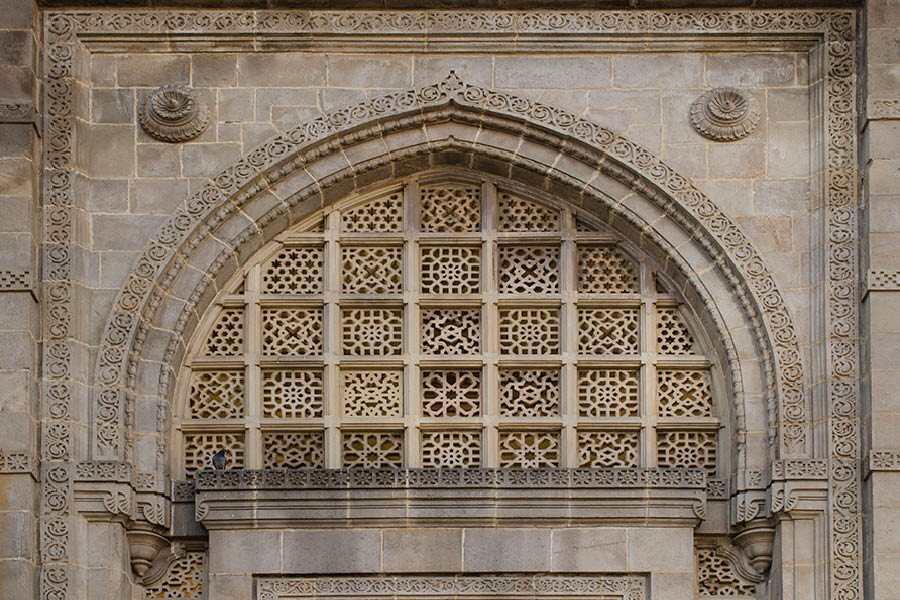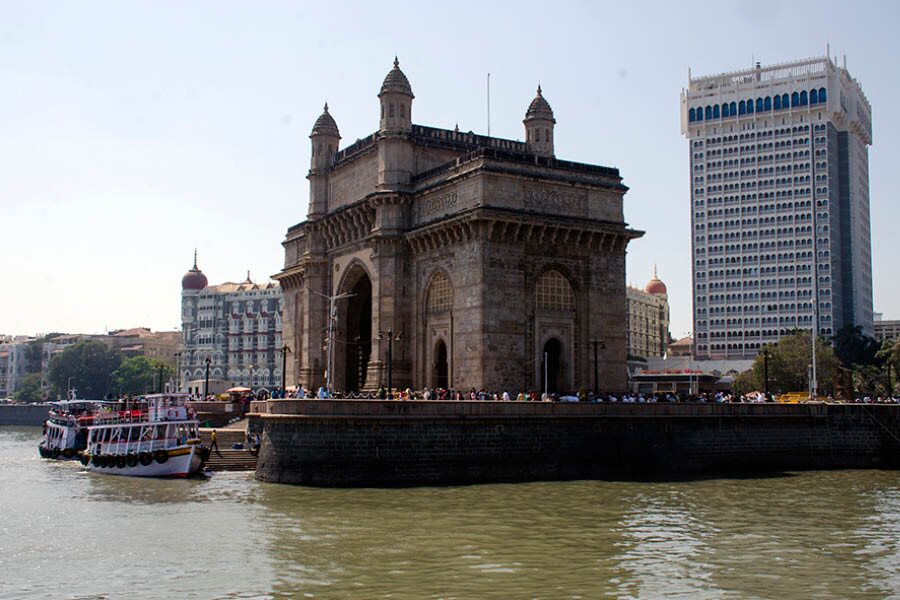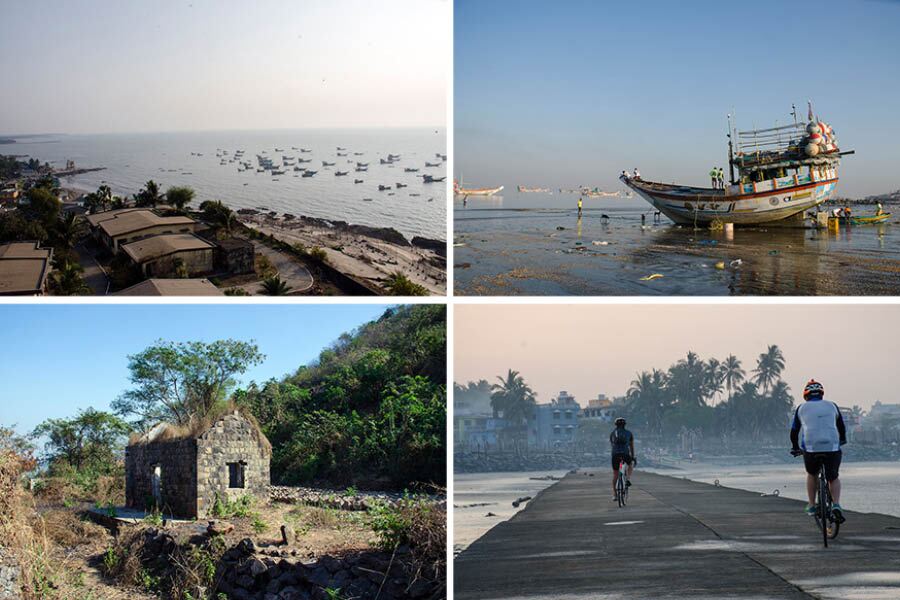Gateway of India, Mumbai’s iconic landmark, was planned to welcome the British monarch George V and his wife Queen Mary. The royals arrived in Mumbai (then Bombay) on December 2, 1911. Sadly, the construction of the Gateway of India was yet to start, so a cardboard model welcomed the royals to India, considered as the jewel in the British crown.

Intricate lattice work at the Gateway of India
The foundation stone was laid two years later by Sir George Sydenham Clarke, the then governor of Bombay. The construction began in 1915. The area, known as Apollo Bunder, was a marshy land and served as a fishing village. The land was reclaimed for the gateway and a sea wall was constructed to protect the gateway. George Wittet was the chief architect and the construction was executed by Gammon India. Finally, the ceremonial gateway was opened to public on December 4, 1924, by the then Viceroy of India Rufus Isaacs.
The ceremonial archway is built of brown basalt stone, it towers to a height of 26m (85ft) and have turrets on four corners. The lattice or decorated perforated arched screens were brought all the way from Gwalior. Inscription on both sides of the gateway mentions the story of its erection. After construction, the Gateway of India served as a commemorative gateway to colonial India for high-ranked British officials and came to be known as the Gateway of India. It has been called a symbol of ‘conquest and colonisation’ commemorating British colonial legacy.

The plaque commemorating the return of Mohandas Karamchand Gandhi and Kasturba
After Independence, the Gateway of India also marked the ceremonial exit of the last British battalion. On February 28, 1948, the First Battalion of the Somerset Light Infantry passed through the gateway signalling the end of British military presence in India. Even during the pre-Independence, the Gateway of India has witnessed the entry and exit of prominent Indians. This includes Mahatma Gandhi, who returned from South Africa on January 9, 2015, via the Gateway of India. A plaque installed a century later in the gateway compound mentions the story of return of Gandhi and his wife Kasturba.
Today, the Gateway of India remains a prime tourist attraction of Mumbai. It is surrounded with a beautiful landscaped complex with a huge open space. Entry is free but visitors have to go through a security check. The open area provides a great view of the Taj Mahal Palace hotel and also of the harbour dotted with numerous boats and ships. Flocks of seagulls and pigeons are integral part of the huge Gateway of India complex.

The inscription atop Gateway of India welcoming King George V and Queen Mary
The complex also houses two statues. One of Chhatrapati Shivaji and the other of Swami Vivekananda. The statue of Chhatrapati Shivaji, on horseback, came up in 1961 and replaced the statue of George V. A group of photographers make a living by shooting photos of tourists with Mumbai’s most iconic structure in the backdrop. The complex is also home to a jetty and connects Mumbai to various places via the waterway. This also includes the ferry to the Elephanta Caves, a UNESCO heritage site located on the Elephanta Island.

An assortment of boats and vessels at the harbour as viewed from the Gateway of India complex
On special occasions, the grand ceremonial arch is lit up and creates a grand spectacle. The open space in the front is used for festivities like the Elephanta Festival of Music and Dance, which was shifted from its original location at the Elephanta Caves, in 2012. The Jewish community of Mumbai celebrates the festival of Hanukkah, with the lighting of candles in a decorative candle-stand known as menorah. It also acts as the venue for National Navy Day held on December 4. Last but not the least, the large open space has also been used by various political protesters.


